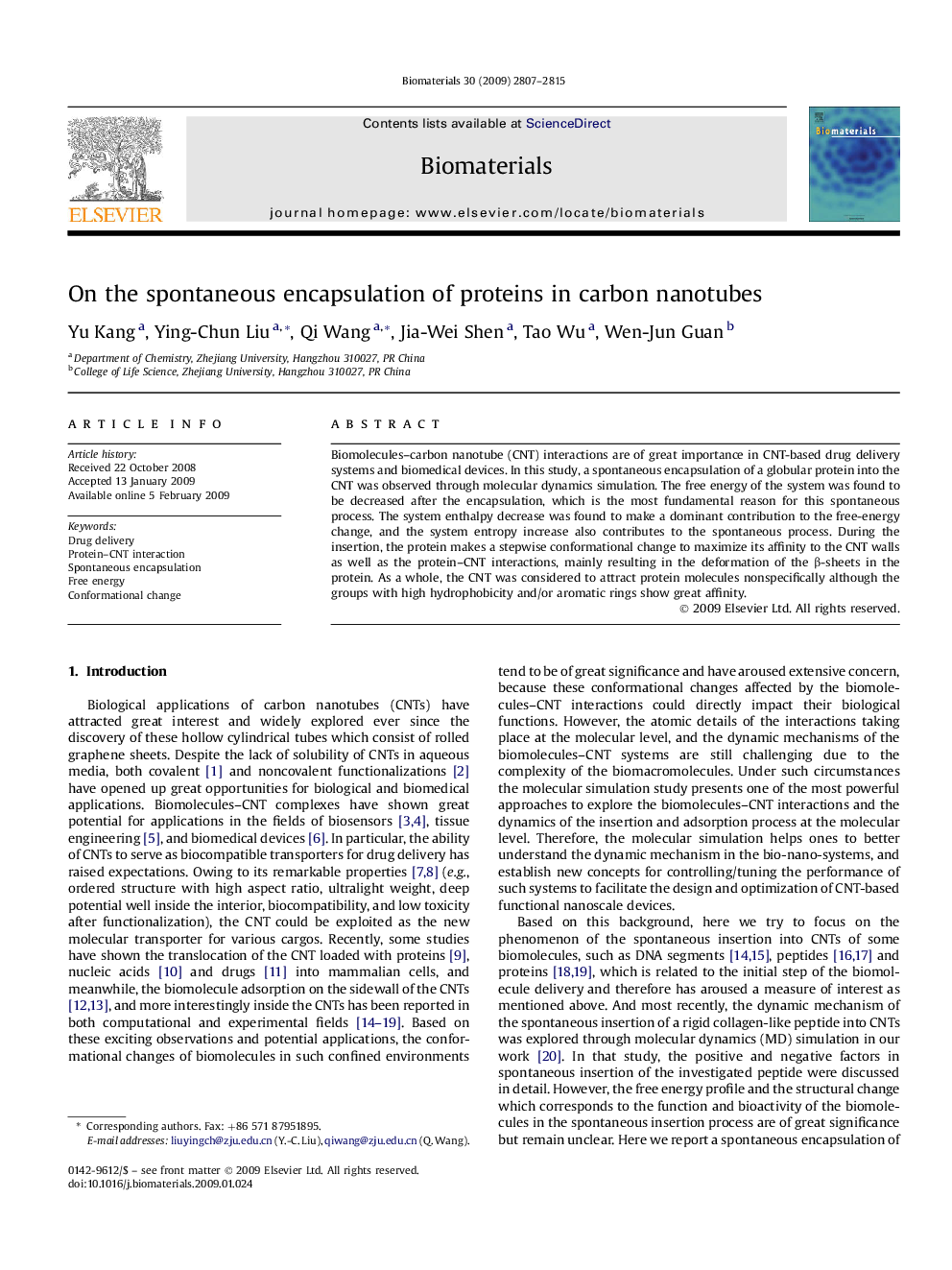| کد مقاله | کد نشریه | سال انتشار | مقاله انگلیسی | نسخه تمام متن |
|---|---|---|---|---|
| 8828 | 607 | 2009 | 9 صفحه PDF | دانلود رایگان |

Biomolecules–carbon nanotube (CNT) interactions are of great importance in CNT-based drug delivery systems and biomedical devices. In this study, a spontaneous encapsulation of a globular protein into the CNT was observed through molecular dynamics simulation. The free energy of the system was found to be decreased after the encapsulation, which is the most fundamental reason for this spontaneous process. The system enthalpy decrease was found to make a dominant contribution to the free-energy change, and the system entropy increase also contributes to the spontaneous process. During the insertion, the protein makes a stepwise conformational change to maximize its affinity to the CNT walls as well as the protein–CNT interactions, mainly resulting in the deformation of the β-sheets in the protein. As a whole, the CNT was considered to attract protein molecules nonspecifically although the groups with high hydrophobicity and/or aromatic rings show great affinity.
Journal: Biomaterials - Volume 30, Issue 14, May 2009, Pages 2807–2815